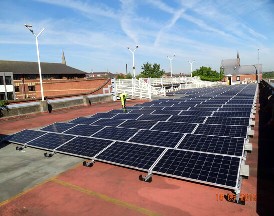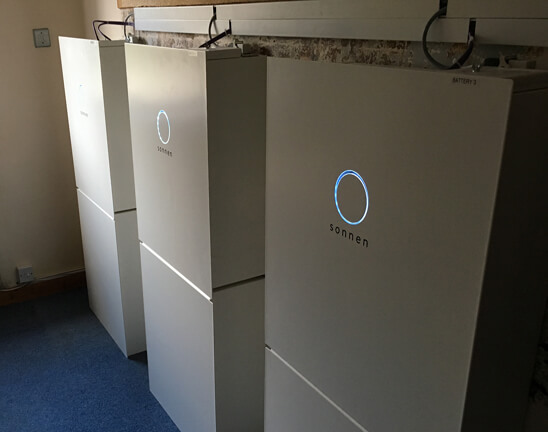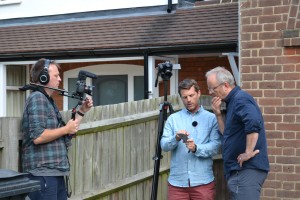Solar and Storage at the University of Wales Trinity St David
The University of Wales Trinity Saint David (UWTSD) declared a climate emergency in 2019 and is dedicated to creating a community which supports sustainability through social, economic, cultural, and environmental responsibility.
Sustainable development is one of the University’s values, with staff and students working together to have “a positive impact on people, communities and the planet”. This multi-campus centre of learning holds Level 5 of the Green Dragon Environmental Standard and there has also been significant financial investment in solar and storage so the University can generate its own clean, green energy. To this end, Joju Solar has been working on bringing solar and battery storage to two buildings on the Swansea campus, changing the way the buildings generate and store power.
It takes two…
On the College of Art’s Dynevor building, at the heart of the city’s arts quarter, we’ve installed a 130kWh Pixii battery alongside 150 kWp of PV, using Canadian Solar 380Wp panels and a Solis inverter.
We’ve also installed a 42kWh Victron battery with 80 kWp of solar on the Technium 2 building at the Swansea campus. Again, we used Canadian Solar 380Wp panels and a Solis inverter.
In terms of selecting the kit, half hourly data was used to specify batteries that best matched the excess generation of the PV systems. The panels and inverters were chosen based on a mix of quality and cost.
Battery benefits
The solar PV generates electricity which can either be used immediately, or stored in the battery for when the buildings need it the most. There’s a mixed level of demand in both buildings as being a base of education, the buildings aren’t as well-populated over the weekend. It therefore makes sense to store the self-generated energy during those periods for use when footfall is greater.
Savings to celebrate
The systems will contribute Co2 savings of approximately 41.5 tonnes a year, supporting the University’s climate commitments. There will also be significant financial savings across both buildings. These are estimated at around £37,000 a year on the basis of a 22p per unit electricity price and the systems generating around 200,000 kwh a year with the batteries using 85% of that.
And there’s more…
We’ve also installed 22.8kWp of solar on a third building, Technium 1. With sixty 380Wp panels and a Solis inverter, the system is estimated to save 4.44 tonnes of Co2 a year. .
Ed Baughan, Joju’s Head of Commercial Solar said:
“Our team is delighted to work with UWTSD to help them realise their sustainability ambitions. At the heart of everything we do is our mission of cutting carbon, so it’s great to install the technology that helps the university reduce its carbon footprint and create greater energy self-sufficiency, whilst making financial savings too”.
A sustainability hero
When it comes to its students, UWTSD encourages everyone to “Become the hero of your own story” by “creating the education experience you’ve always wanted”. By making a real commitment to cutting carbon, the university is becoming the hero of its own sustainability story too – taking positive strides towards a green future and leading by example.
Joju is proud to be working with UWTSD and we relish the supporting role we’re able to play in their story of environmental responsibility.
Further reading
- Discover more about our commercial solar projects
- Check out another solar and battery storage story
- Find out more about our other public sector work













